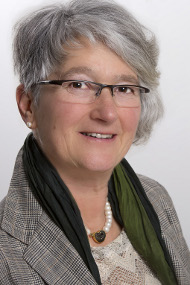Lusophoner Sprachgebrauch zur Zeit der portugiesischen Seefahrer ('Rios de Guiné' und Kapverdische Inseln)
Kierownictwo projektu:
- Prof. Dr. Konstanze Jungbluth (Chair of Pragmatics and Contrastive Linguistics, European University Viadrina)
- Prof. Dr. Nicole Richter (Chair of Multicultural Communication, European University Viadrina)
- Prof. Dr. Nana Aba Appiah Amfo (University of Ghana)
- Prof. Dr. Florian Dost
Opis projektu:
Recently discovered Early Modern paintings show Africans and Europeans engaged in close collaboration and daily conversation in public and private spaces. This emancipated relation confuses the contemporary public, including scholars. The received doctrine in Europe, the Americas, and Africa, conveys a different story: racism and segregation have always regulated the interactions between Whites and Blacks. Yet, historical documents from the 15th and beginning of the 16th century suggest a different development in the relations between Europe and Africa, and how these relations impacted globalization. New uncovered manuscripts, (e.g., correspondences, records of commercial, legal and religious disputes) indicate complex interactions between Africans and Portuguese as well as other Europeans. For example, some Portuguese who settled in Africa, Eurafrican ‘lançados’, married African women under the matrimonial bond called ‘calisaire’, and their bilingual descendants could become part of the local nobility. The social practices accompanying such socio-cultural and economic negotiations were written in Portuguese or some variety thereof. This ‘new’ variety was used natively by some of the interlocutors, while others, early or advanced speakers, apparently spoke it as a lingua franca. This variety of Portuguese therefore appears to have been spoken widely in West Africa prior to and during the colonial period. Indeed, the importance of this vernacular in this area continued well after Portugal lost influence in the region. The Dutch, who joined the trade later, named the vernacular spoken along the Gold Coast ‘Kust-Portugees’, and wrote the first vocabulary list and phrase books. Europeans trading on the coast used this coastal Portuguese variety to communicate among themselves, and with the Africans. One can therefore assume that such varieties were functional and stable enough for new comers to acquire them. Our project aims to shed light on the emergence of Portuguese varieties used as medium of communication during the early encounters between Europeans and Africans, prior to colonization. To begin with, we focus on two locations: the Cape Verde islands and Elmina (Ghana), a harbor and the first European settlement (1482) in sub-Saharan Africa. We concentrate on four groups of social actors: maritime crews (including ship captains and pilots, African ‘grumetes’); merchants; farmers; and the first missionaries. Rooted in historical pragmatics, our team, including researchers from Ghana and Cape Verde, supported by internationally renowned experts on language contact from Chicago, Amsterdam, and Vila Real, proposes to carry out research on core issues related to socio-historical aspects of this communities, as well as their Portuguese language varieties, that is, lexical, morphological, and syntactic patterns that arose in this situation of social, cultural, and linguistic contact.


